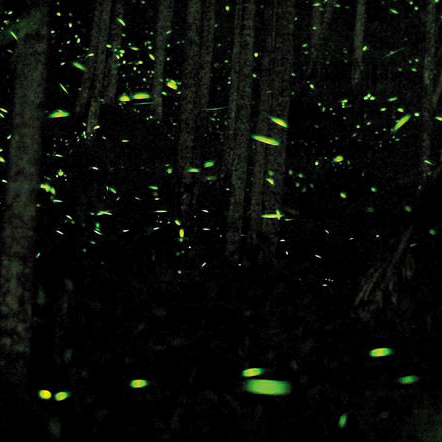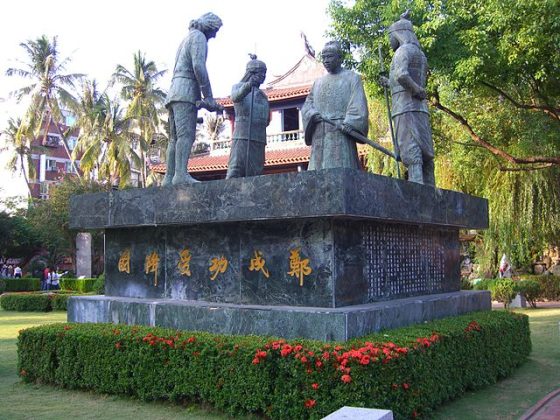Awaking early the next morning to a cool, misty rain, we hit the buffet and headed out to explore around the Cham Cham Hotel. We spent an hour or so exploring the grounds, which included a swimming pool, a world class climbing wall, and several pampered cats. We could have happily spend the rest of the day there just feeding the cats, but we had way more of Tainan left to explore.
Sea of Clouds in Mei Ling
Driving from the hotel, we began climbing through the hills and soon found ourselves parking at a trailhead at the Mei Ling Scenic area.
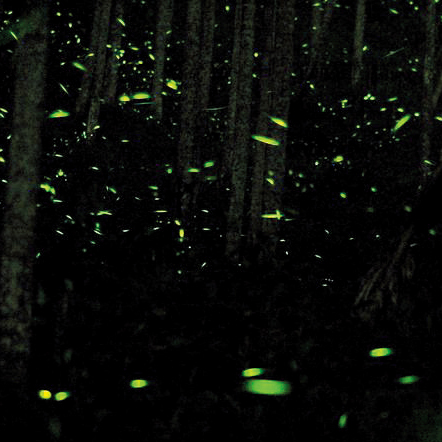
“This area is famous for its fireflies,” Chen-hui said, “but of course, they come out closer to dark.” Though we saw no fireflies as we hiked, we could hear the melodic chirping of cicadas. And as we climbed higher, the views became more impressive.
There are a few spots in Taiwan known for their sea of cloud effect, that is, the illusion created by watching clouds float beneath from a high altitude. Lishan and Alishan both come to mind. Stephanie and I were pretty surprised to find ourselves walking above a sea of clouds in Meiling, both because the altitude was considerably lower, and because the clouds themselves usually form closer to dawn than lunchtime.
“It is quite unusual to see the clouds this time of day,” Chia-hao told us, and Stephanie and I felt fortunate to have witnessed this rare phenomenon.
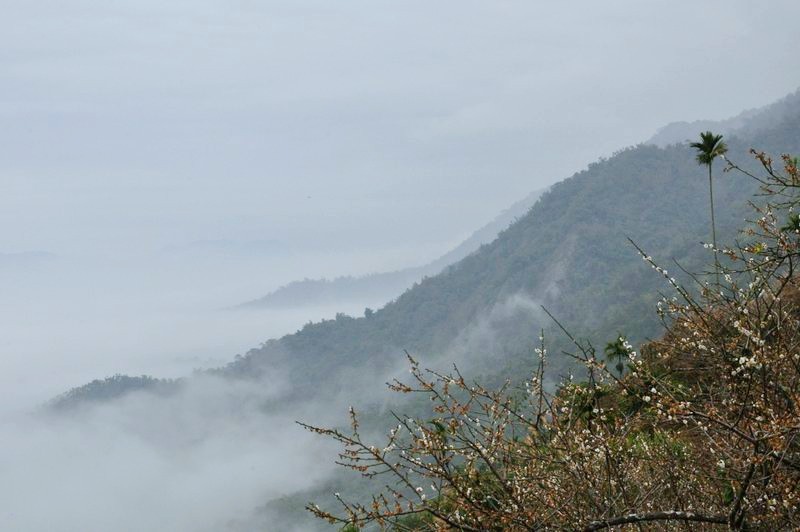
We could have hiked for hours – Meiling has an extensive path network leading through flowering groves and past mountain temples – but lunchtime was fast approaching, and our guides had more of Tainan county to show us before the day was done.
Serious Chicken Soup in Bucolic Splendor
It wasn’t a long drive to our lunch spot, perhaps ten minutes. The venue was typical for rural Taiwan, an indoor kitchen with most of the dining area under an awning out front. But there had to be something special about the menu. The place was packed despite being a good hour’s drive from the city.
“This place is well known for a dish called Plum Chicken, a chicken hot pot made with pickled plums,” Chen-hui told us, adding that people drove from all over southern Taiwan just to eat this particular dish.
It was delicious indeed, and distinctively tart. Our guides also ordered a variety of other dishes, including local vegetables, fried turnip cakes, fried rice, and a clearly not locally harvested plate of boiled shrimp.
The Local Arts and Culture Scene

Following our meal, we headed back down the mountain to the town of Madou. In the planning stages, we’d requested that the Tainan Tourism Bureau bring us to Tainan’s less touristy spots. They’d accomplished the task well. I’d never been to any of the places we’d been up to now, and never even heard of Madou.
Little did I realize that the town would wind up being home to two places in Tainan to which we vowed absolutely to return. The first of these was the Tsung Yeh Arts and Cultural Center.
“You said you wanted to experience art, so we thought we would first bring you here,” said Chen-hui, parking next to a series of beautifully restored Japanese colonial era buildings surrounded by trees, and grassy fields filled with unusual sculptures and other artwork.
A wooden walkway featured boxes covered in small murals painted by various artists. Frog and lizard sculptures hung in various trees.
“There’s art everywhere!” Stephanie happily cried before trotting over to a cluster of giant heads bearing peaceful facial expressions. On top of their skulls were circular holes, through which lights would shine at night.
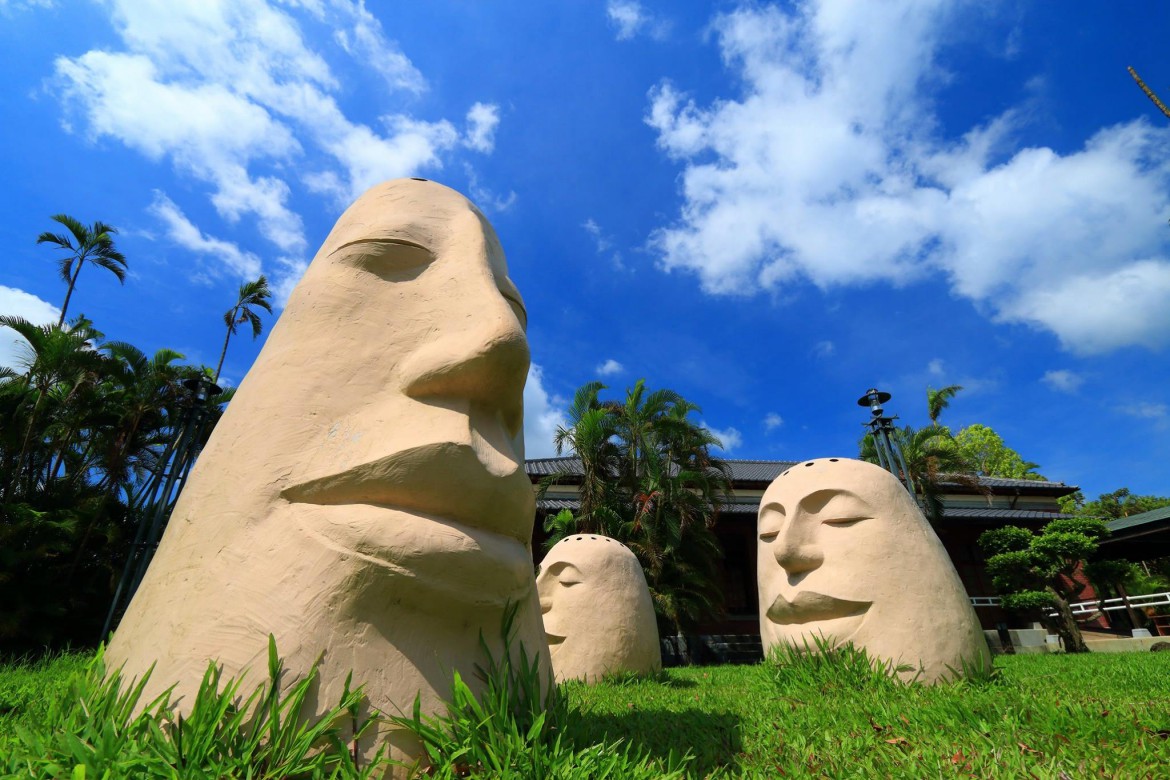
The center is built on the grounds and using many of the old buildings of a former sugar plantation. Like many former sugar plantations around Taiwan, the area has been transformed into an oasis of art and culture.
We were brought into one of the restored colonial buildings to check out some of the artwork created by visiting artist Nobuyuki Sugihara, a piece called The Ship of Shells , a series of sailing vessels made out of shells. One piece made entirely out of oyster shells stretched out across the entire room and extended outside the building.
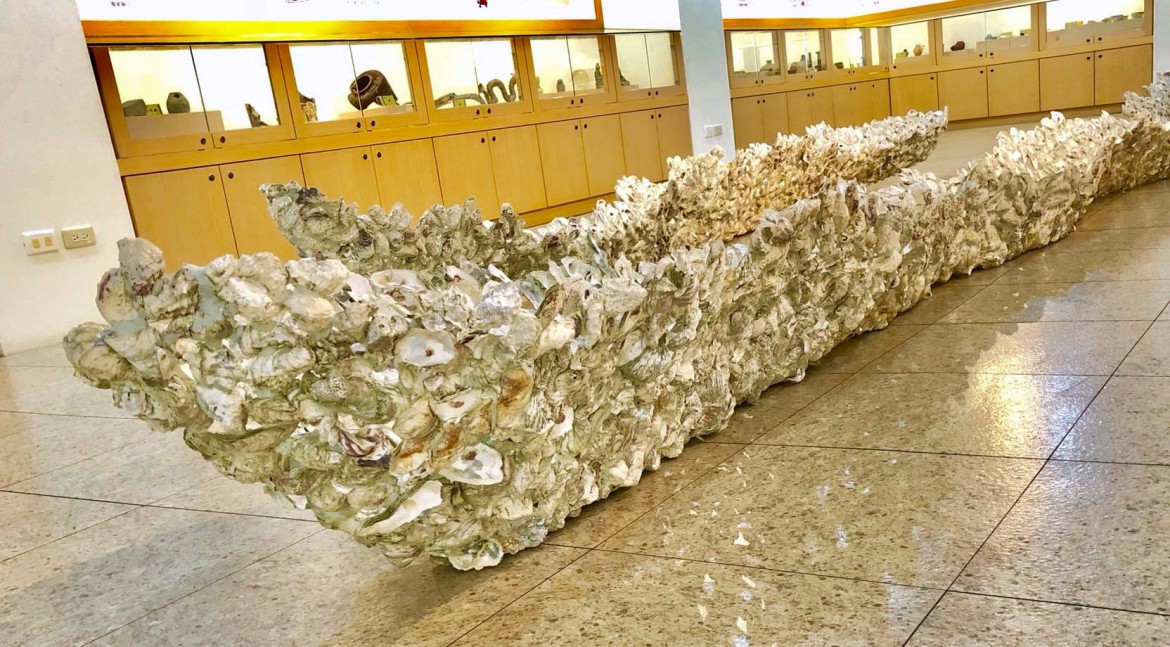
The theme running through nearly all the work found here was this: Artists, both local and international, had used local materials to create stunning works of art that were each in their own way connected to the history or topography of the area itself. We spent about two hours walking through the buildings and exploring the grounds, and could have easily spent two more. (Stephanie, in fact, is considering spending significantly more time there at some point, since the Tsung Yeh Arts and Cultural Center offers artists residency programs of varying durations.)
Taoist Hell and Buddhist Heaven
But our guides has one more stop planned for us, and led us gently back to the vehicle. They’d saved the best for last. We would be visiting Madou’s Daitianfu Temple. We were about to go to hell.
“This is a very special temple,” Chia-hao told as we parked next to what resembled a five story Fabergé egg on which larger than life Buddhist images had been carved and painted. But before we could enter the heavenly structure, our guides were approached by a local, who said something in Taiwanese.
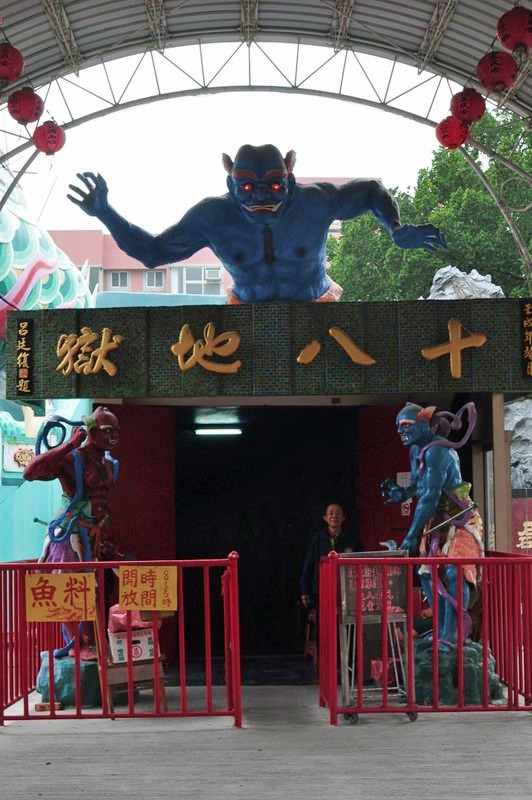
“He says that we should first visit the other part of the temple, as it will close soon.”
The other part, it turned out, was around the back. Three blue-skinned demons stood around a stairway leading down into the darkness. Over the stairway were Chinese characters reading The Eighteen Hells.
“Oh, this looks fun,” I said to Stephanie.
As we reached the bottom of the stairs, the lights came on over the first display. Moans and screams were heard as animatronic robots began acting out the first of many scenes of judgement and torment. A shrill, harsh voice shouted in the Taiwanese dialect. This, we learned, was the voice of the celestial judge explaining in loving detail both the sins of the deceased and the torments they’d be enduring in the individual chambers of Taoist hell, each dedicated to a specific sin.
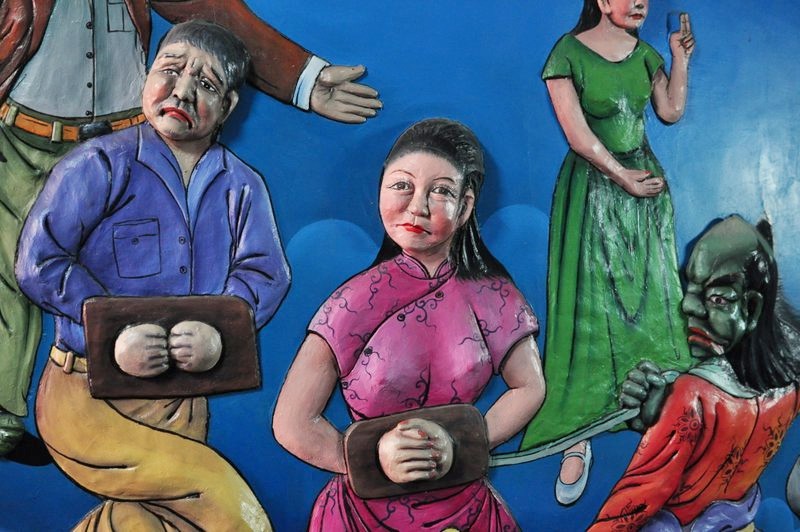
Approaching the individual displays triggered a motion sensor, waking the lights, sounds and action of each. Our guides did their best to translate into Mandarin what was clearly the esoteric ins and outs of crime and punishment, Taoist-style.
Hells and punishments awaiting the wicked included:
- A hell for those bearing false witness in which the sinners had their eyes gouged out with spikes.
- A hell for those who had committed sexual crimes in which their private parts were chewed off by dogs for eternity.
- A hell for those who gossiped. Their tongues were torn out with hot pincers.
Just to name a few. Other chambers of torment included one in which victims heads were dipped in boiling oil, another in which the sinner was sawn in two, and yet another where the convicted were baked into a gruesome bun.
Stephanie and I enjoyed the macabre spectacle (which she described as “a cross between a Chuck E. Cheese restaurant and a haunted house”) thoroughly. A few children who’d been brought by their parents apparently didn’t, and more than one family rushed past us beating a hasty retreat bearing crying children.
After eighteen chambers punctuated by murals on the walls depicting random punishments, we reached the stairway up, from which the last bits of daylight trickled down. Before the doorway was a sign in Chinese, which our guides told us was meant to signify rebirth as being a path out of hell.
Stephanie and I both agreed that given the choice between Christian and Taoist hells we’d choose the latter, which was both more creative and offered a way out through reincarnation.
The sun almost down, we returned to the dome-like temple up front, where we basked in the heavenly splendor of all the Buddhas, Bodhisattvas and random angelic entities within.
End to an Epic Journey
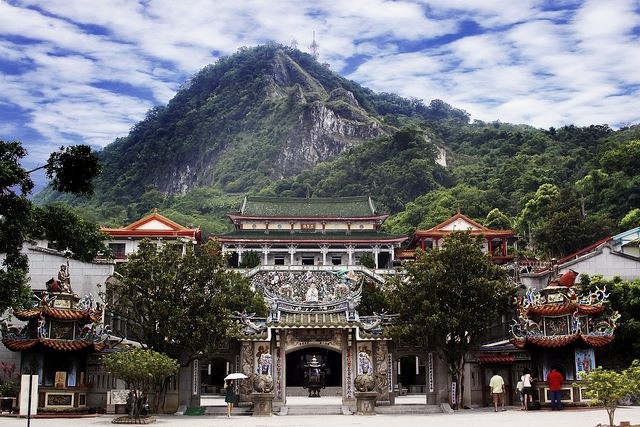
Our tour now over, our guides drove us to our final stop, the hotel in Guanziling which the bureau had helped arrange for us.
“We hope that you had a good time,” Chen-hui said as he dropped us off, and Stephanie and I agreed that our time in Tainan had been not just awesome, but surprisingly awesome.
In addition to all the art, culture and food, we’d also gotten the chance to see the clouds from above, visited with a few dozen Buddhas, and even gotten our own personal taste of hell.
And if those aren’t the elements of an epic journey, I don’t know what is.
Just tuning in? Check out the first part of our narrators’ Tainan experience in Exploring the History, Handicrafts and Culture of Tainan City.
Looking to have an epic adventure of your own? Let MyTaiwanTour custom design your tour!
Want to experience Tainan as part of a larger tour incorporating Kenting, Kaohsiung and More? Check out MyTaiwanTour’s Southern Taiwan Five Day Fun Tour.

